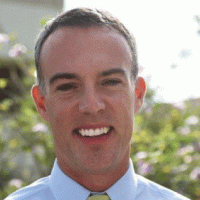
Separate but Equal Redux: Resolving and Transcending the Poor Door Conundrum
“When you suddenly find your tongue twisted and your speech stammering as you seek to explain to your six-year-old daughter why she cannot go to the public amusement park that has just been advertised on television, and see tears welling up in her little eyes when she is told that Funtown is closed to colored children, and see the depressing clouds of inferiority begin to form in her little mental sky. . .then you will understand why we find it difficult to wait.”
Dr. Martin Luther King, Letter from a Birmingham Jail, 1963
Like so many others, I was shocked and troubled to learn that fifty years after Dr. King wrote of the deep humiliation of segregation, there are policies in place in New York City sanctioning a 21st century version of separate and unequal. I imagined a parent in a “poor door” building today, trying to explain to a child why they had to use a separate entrance into their building, why they could not use the fitness center, pool or playroom, or why they could not store their belongings in the storage room used by other building residents. And rather than the emergence of the dream that this Forum is revisiting there would be a parent’s nightmare of “depressing clouds of inferiority.”
This is an especially poignant moment for this particular discussion topic as we commemorate the 50th anniversary of the Selma march and President Obama exhorts us to remember the “meaning of America” and “the idea of a just America, a fair America, an inclusive America, a generous America.” These lofty principles are at the forefront of Mayor de Blasio’s Housing New York plan for which his cover letter speaks of “knitting communities together” and making New York “a city where everyone rises together [. . .] where our most vulnerable, our working people, and our middle class can all thrive.”
In his essay opening this discussion, Professor Glaeser acknowledges the “jarring” nature of the existence of poor doors and concedes that perhaps they should be banned. But, true to the eminent economist that he is, he steers quickly away from squishy issues of social justice and racial equity and focuses on elucidating why the question of poor doors, and indeed the whole notion of the “in-kind transfer” of affordable housing, is a complex and problematic policy approach. He makes several points with which I agree but ultimately disregards some fundamental realities that make his predilection for the silver bullet of “cash transfers” ultimately unconvincing.
First the common ground. Professor Glaeser and I agree that “there is abundant evidence on the downsides of city-wide segregation.” As Patrick Sharkey notes in the opening discussion of this forum, “confronting racial segregation should be seen as one way to weaken a core mechanism by which racial inequality is maintained and reproduced in America.” Second, we agree that there are compelling economic and political arguments for integration within buildings. There is room to parse these arguments more thoroughly, and my review of the theory and research has found that mixed-income developments hold more promise for improving social order and enhancing the quality of amenities and services than for social capital formation and role modeling (Joseph, Chaskin and Webber, 2007). Third, we agree that poor doors would seem to “reduce the economic benefits” and “kill” any political benefits. Finally, I fully agree with Professor Glaeser that “we need to be sure that integration at the building level really brings any benefits” and we currently have far from enough evidence to make a conclusive case for or against poor doors.
So where do our points of view diverge? My first, and most stark, point of contention with Professor Glaeser regards his yearning for a policy that would provide a cash transfer to the poor to facilitate their “freedom” rather than engineering desegregation and inclusion. Give them cash and they’ll find the choice that’s best for them, or at least give them a voucher and don’t constrict their choice to a “shiny new luxury building.” He makes, on the face of it, the persuasive argument that the “market value of the unit being provided through the affordable housing program is likely to be far higher than the cost of providing decent housing somewhere else in the city.” Here’s the problem: as a vast literature on neighborhood effects has made clear, quality of life and access to opportunity come from housing and the neighborhood context and amenities with which it is bundled.
Is Professor Glaeser’s cash transfer large enough to pay not only for high quality New York City housing but also quality schooling, neighborhood safety, quality retail, services and amenities, and employment opportunities? And how does his cash transfer address housing discrimination, limited information to guide a citywide search, and transaction costs? De Blasio’s Housing New York plan makes the point clearly: “The inequality and lack of diversity in many neighborhoods means that some families do not have access to the education, jobs, and other opportunities others enjoy. It also means that low income households often are unable to find homes in the neighborhoods in which they would like to live.” As Sherrilyn Ifill states in this forum’s first discussion: “we should also recognize the pragmatic reality that housing integration may be the most foolproof way to ensure the equitable allocation of public services and development dollars for black children and families.” In the same discussion, Mary Pattillo goes further, calling for the “real stuff of equality--wages that support a family, income maintenance in the absence of work, schools that compensate for inequalities in family resources, policing that does not always have its finger on the trigger.”
Second, in my view Professor Glaeser underestimates the potential harm that could be rendered by settling for “partial integration,” what he refers to as possibly “reasonable middle ground” between full integration and his preferred cash transfers. While he has a point that poor doors don’t create inequality, they certainly exacerbate it, promoting a phenomenon that Robert Chaskin and I call "incorporated exclusion" in our forthcoming book, Integrating the Inner City, on the mixed-income transformation of high-rise public housing in Chicago. Residential integration without “ensuring participation and advancing inclusion,” as Olatunde Johnson urges in her contribution to this Forum’s discussion of gentrification, can generate a sense of stigma and marginalization (Chaskin, Khare and Joseph 2012; Khare, Joseph and Chaskin 2014; McCormick, Joseph and Chaskin 2012). Professor Glaeser fails to note that the impact of poor doors often extends well beyond assigning separate entrances and lobby areas to exclusion from fitness centers, pools, playrooms, rooftop gardens, and storage areas.
My final point will surely dismay Professor Glaeser and others willing to accept the poor door compromise. A growing body of research on mixed-income housing suggests that banning poor doors would only be a first level of intervention required to make good on Mayor de Blasio’s aim of “knitting communities together.” In addition to truly mixed income buildings, there will need to be proactive property management, inclusive governance and voice for residents, and community building to identify common ground and establish shared norms and expectations for what I call effective neighboring. Why has mixed-income housing yielded disappointing results thus far? In part, in my view, because not enough has been done to “activate the mix” and leverage the economic diversity for the benefit of all residents.
Speaking of common ground, back to two clear implications on which Professor Glaeser and I can agree: there should be immediate efforts, both informal and more rigorous, to build knowledge and evidence about the demographics, well-being, and experiences of residents in poor door buildings, and there should be a longer-term evaluation leveraging the lottery assignment process for affordable units to test the effects of inclusionary housing on low-income households. In addition, I would urge city administrators to incentivize, support and press private developers and their property managers to activate the mix through proactive and intentional strategies to avoid exclusion and stigma and promote engagement and opportunity.
In his Selma speech, President Obama declared that “with effort, we can roll back poverty and the roadblocks to opportunity […] But we do expect equal opportunity […] if we really mean it, if we’re willing to sacrifice for it […]” This is a useful framing of the policy challenge ahead. Can private developers be convinced to sacrifice some profits in order to promote inclusion? Will enough higher-income residents be willing to sacrifice exclusivity and the comfort of homogeneity? Will low-income residents be willing to sacrifice the comfort of familiar social surroundings and accept greater scrutiny? And can property managers adapt from the relative simplicity of a homogenous (or segregated) clientele and accept a broader role as community builders? Much stands to be learned as the 50-year quest for racial and economic integration in America now takes center stage in New York City.
Sources:
Chaskin, R.J. & Joseph, M.L. In press. Integrating the Inner City: The Promise and Perils of Mixed-Income Public Housing Transformation. Chicago, IL: University of Chicago Press.
Chaskin, R. J., Khare, A.T. & Joseph, M.L. (2012). Participation, deliberation, and decision-making: The dynamics of inclusion and exclusion in mixed-income developments. Urban Affairs Review. 48(6), 863-906.
Joseph, M. L., Chaskin, R. J., & Webber, H. S. (2007). The theoretical basis for addressing poverty through mixed-income development. Urban Affairs Review, 42(3), 369-409.
Khare, A.T., Joseph, M.L. & Chaskin, R. J. (2014). The enduring significance of race in mixed-income developments. Urban Affairs Review, 50(4), 1-30.
McCormick, N., Joseph, M.L. & Chaskin, R.J. (2012). The new stigma of relocated public housing residents: Challenges to social identity in mixed-income developments. City and Community, 11(3), 285-308.






